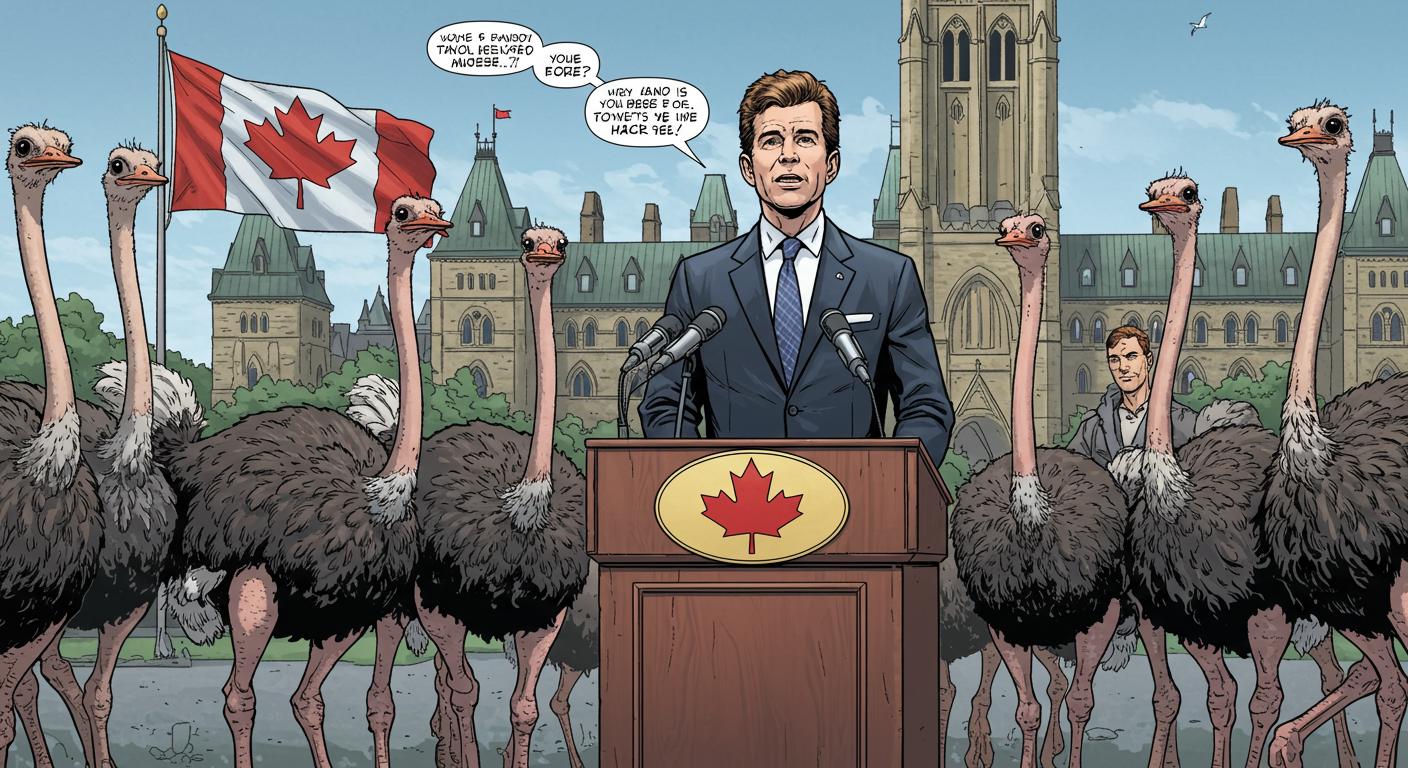Some headlines beg a second look, but even the archivers of oddities among us will concede this one deserves a spot in the “you can’t make this up” file: A U.S. presidential candidate is petitioning the Canadian government to grant clemency—not for a person, but for a flock of ostriches.
International Pardon Diplomacy: Ostrich Edition
Start at Universal Ostrich Farms in British Columbia, where the Canadian Food Inspection Agency ordered a cull of nearly 400 ostriches after avian flu was detected in two birds last December. According to details outlined in The Independent, the agency’s “stamping-out” policy—essentially, a zero-tolerance approach to bird flu exposure—triggered the mass euthanasia order. This method, familiar to anyone who’s followed livestock disease management, aims to limit viral spread, even at the expense of the uninfected flock.
So far, standard-issue biosecurity procedure. Enter Robert F. Kennedy Jr.: currently Secretary of Health and Human Services, presidential hopeful, and, as it happens, now an advocate for diplomatic avian reprieves. In May, Kennedy wrote to Canada’s food agency, pressing for a pause, not for sentiment but for science. “We believe significant scientific knowledge may be garnered from following the ostriches in a controlled environment at the Universal Ostrich Farm,” Kennedy’s letter urged—suggesting the flock offers a living laboratory for combating avian flu, as relayed by The Independent.
A Who’s Who of Ostrich Advocacy
It might seem like a fever dream to read, but the list of co-signers doesn’t stop at Kennedy. In a twist that even a trivia buff might fumble, Trump’s former Medicare administrator Mehmet Oz and billionaire John Catsimatidis have also championed the ostrich cause, with Dr. Oz volunteering his Florida ranch for potential bird relocation, according to a summary of correspondence referenced in Politico. (One imagines a Florida wildlife official, reading that offer, having questions.) The three sent letters to Prime Minister Mark Carney and relevant agencies advocating for a policy change.
Meanwhile, the advocacy scene on the farm has developed all the trimmings of a grassroots campaign: activists camping out on site, bumper stickers funding legal efforts, and, reportedly, memes of ostriches brandishing firearms and drones populating social media. These are not ingredients found in a typical veterinary manual.
Symptom-Free Birds and Stubborn Policies
Universal Ostrich Farms contends that the overwhelming majority of the flock—“about 400 birds,” per court remarks described in Politico—are symptom-free, months after the initial outbreak. Court filings reviewed by The Independent mention only 69 ostrich deaths (and two confirmed infections), yet the agency called for the destruction of them all. Umar Sheikh, the farm’s lawyer, questioned the necessity of “100 percent destruction based on 0.5 percent confirmed infection,” suggesting policies wielded with such bluntness miss opportunities for nuance.
Defending the cull, the Canadian Food Inspection Agency asserted in a public statement that leaving an exposed flock alive “means a potential source of the virus persists,” and increases the risk of mutation, particularly with outdoor-raised birds mingling with wildlife. They point out the policy is not an outlier but aligns with World Health Organization standards—a point echoed in court, where the agency argued the approach is both reasonable and critical for safeguarding trade and public health.
Numbers cited in Politico show scope: since 2022, Canada has culled more than 14 million birds, over half of them in British Columbia alone. For a single ostrich farm to draw international headlines in this context—well, one suspects even the local chickens are a little envious.
Sentiment, Science, and a Little Bit of Surrealism
Beyond the epidemiological debate, there’s a human (and, arguably, avian) angle at play. The farm’s co-owner, Katie Pasitney, told Politico that these ostriches are not mere numbers but “decades of personalities and animals… raised by my mom’s hands, by us as kids.” You might expect this detail to tug the heartstrings of the presiding judges, though jurisprudence remains quietly indifferent to affectionate anecdotes about large, flightless birds.
The farm contends the ostrich eggs contain “life-saving antibodies,” a claim championed by their high-profile allies, though it’s worth noting the consensus on ostrich-egg-derived miracle cures remains elusive. Still, one could see why the promise of untapped scientific discovery would appeal to, say, a candidate keen to project both maverick and reformer credentials.
All of this, the memes and the courts and the letters from American politicians, coalesces into a truly twenty-first-century oddity. Who knew cross-border poultry management could draw this level of political theater?
When Policy and Populism Collide—Feathers Fly
Peel back the layers—bureaucratic procedure, political PR, grassroots activism, a dab of family nostalgia—and you’re left with a slightly philosophical conundrum: Should national policy dealing with disease outbreaks ever bend to high-profile advocacy or unusual scientific hypotheses? Or is the “stamping-out” mentality a product of necessity in an era wary of zoonotic spillovers?
As highlighted by Politico, this flare-up isn’t just for the birds. Some see the ostrich standoff as a parable about governmental overreach and fraying trust in institutions—a cause that, improbably, has attracted supporters from MAGA circles and Canada’s “Freedom Convoy” movement. One could easily imagine a future where international headlines blare: “Ostrich Policy Becomes Election Issue.” Stranger crossovers have happened.
And so, the flock’s fate hangs in the wings of federal justices in Ottawa, with campaign trail crossfire and memes as its unlikely chorus. While one wonders if the ostriches are aware of their own diplomatic moment—perhaps blissfully pecking at the B.C. dirt—it’s another reminder that, in politics, you never quite know which animal will inspire the next international incident (or internet meme).
Next up: Capybara extradition? Or have we, like the ostriches, stuck our heads in the sand when it comes to predicting what’s possible?







